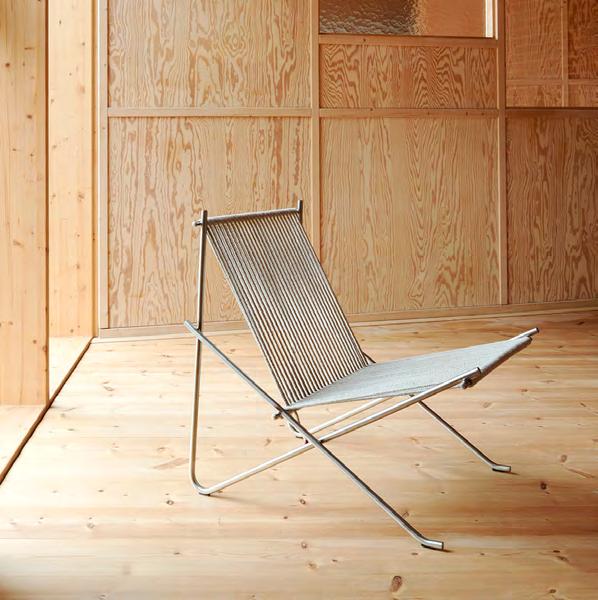POUL KJÆRHOLM COLLECTION
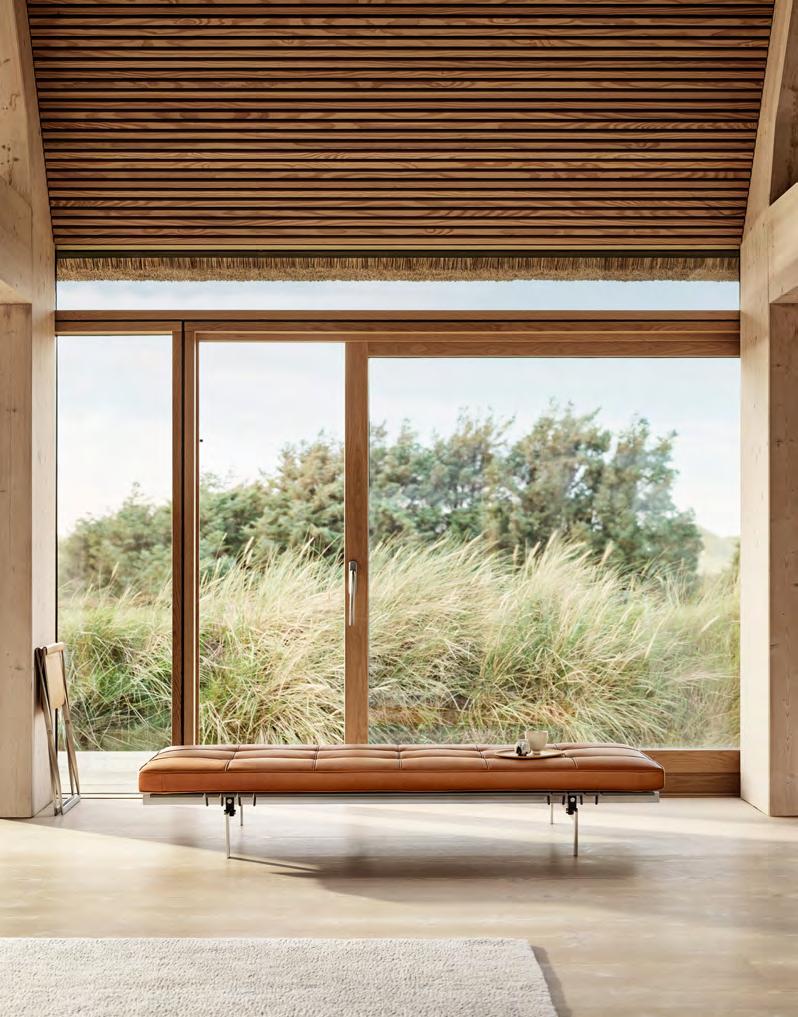








Fritz Hansen’s legacy is defined by extraordinary design and longstanding collaborations with some of the most preeminent designers of our time, not least Poul Kjærholm – a leading light in our design portfolio.
Poul Kjærholm made functional objects of exquisite beauty for everyday life. His artistic vision and craftmanship skills led to the creation of some of the most poetic furniture designs of the past century.
Working at the intersection of industrial design and handicraft, he distilled basic furniture types to their essence. Today, his unique body of work stands as a testament to his unwavering talent, his quest for pure forms and his inherent love of nature and its materials.

Fritz Hansen and Poul Kjærholm began working together in the early 1950s following Kjærholm’s graduation from the Danish School of Arts and Crafts in Copenhagen. His teacher, Hans J. Wegner, today considered a leading figure in the Danish design movement for his innovative and creative designs, recommended the young designer to Fritz Hansen.
With an artistic vision to make simple, massproduced furniture, during his tenure at Fritz Hansen Kjærholm designed a lounge chair made from two pieces of laminated wood, today known as the PK0 A™. However, Fritz Hansen and Poul Kjærholm agreed to part ways after the designer insisted his chair go into immediate production, ahead of Arne Jacobsen’s Ant™ chair.
Soon after, Kjærholm partnered with furniture merchant Ejvind Kold Christensen. The duo spent three decades designing and manufacturing steel furniture until Kjærholm’s untimely death in 1980.
Christensen was unwilling to continue without him and in 1982, the executors of Poul Kjærholm’s legacy entrusted Fritz Hansen with the production and sale of The Kjærholm Collection – more than twenty designs developed by Poul Kjærholm between 1951 and 1967. Each seminal piece represents a chapter in the designer’s deep exploration of spatial experience and respect for natural materials.
Fritz Hansen is honoured to continue production to this day and to distribute Poul Kjærholm’s pioneering furniture to architects, designers and private customers around the world.

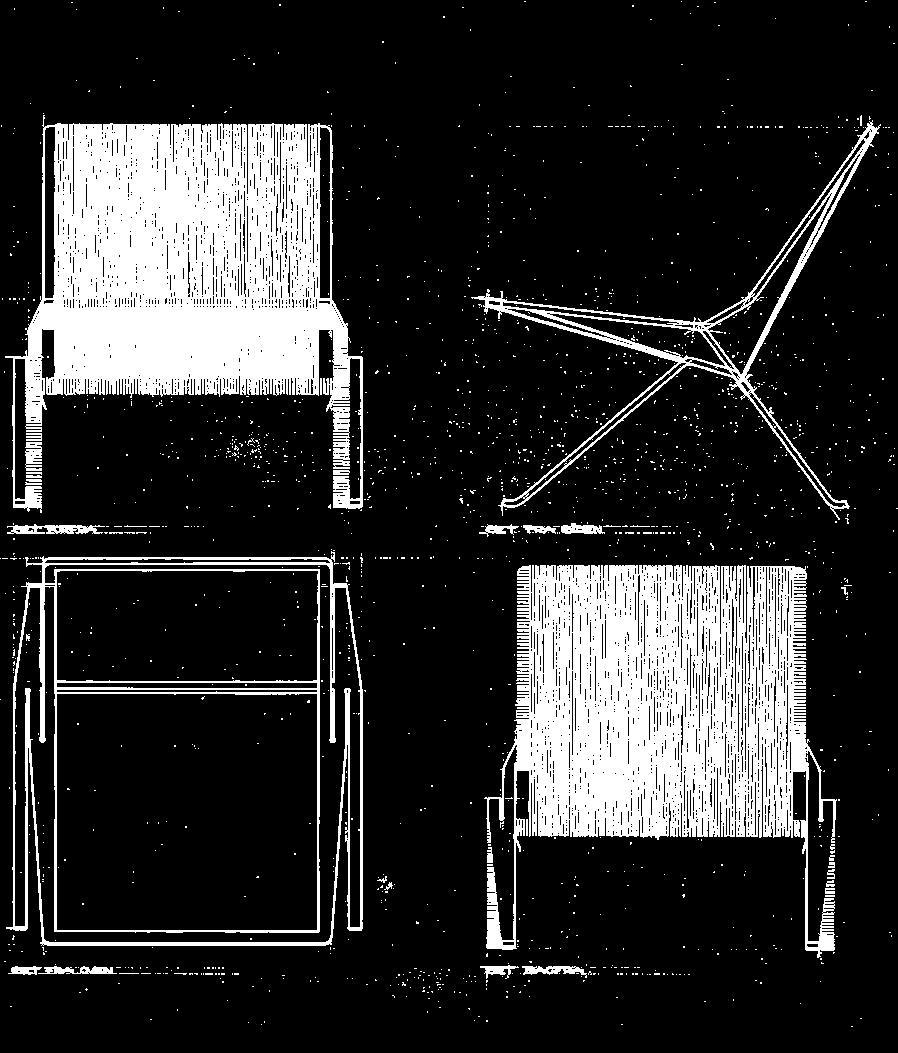
Born in Østervrå, Denmark in 1929, Poul Kjærholm was apprenticed to a cabinetmaker’s workshop at the age of 14. During his years there, he was taught to respect the properties of his materials and to follow the philosophy of the craftsman: you are what you make.
Enrolling at the Hjørring Technical School to learn geometry and technical drawing, he excelled at both his practical training and his studies. By the time he turned 18, Kjærholm was certified as a journeyman cabinetmaker and completed his studies in Copenhagen at the Danish School of Arts and Crafts, under the tutelage of Hans J. Wegner, who taught him to design complete, freestanding objects that were perfect from every angle.
Here, he developed a particular interest in construction materials, especially steel, which he considered a material deserving the artistic respect that was commonly awarded to wood. Eager to
explore materials other than wood, Kjærholm’s graduation project in 1951 was a lounge chair made of a single piece of bent steel and a length of sail cord. This would become his first masterpiece, the PK25™. Kjærholm’s training as a cabinetmaker was the fundamental experience of his early life and a significant influence on his later work with steel.
Showing a natural talent for design and materials, Poul Kjærholm combined the passion of an artist with the precision of a craftsman. His furniture was shaped by a creative vision and a set of principles that are even more important – and rarer – today than in his own lifetime.
Straddling the boundary between industrial design and handicraft, he distilled the basic types of furniture to their essence, creating a unique body of work that reflected his ideas and values: the essential, nothing else; a love of nature, nothing less.
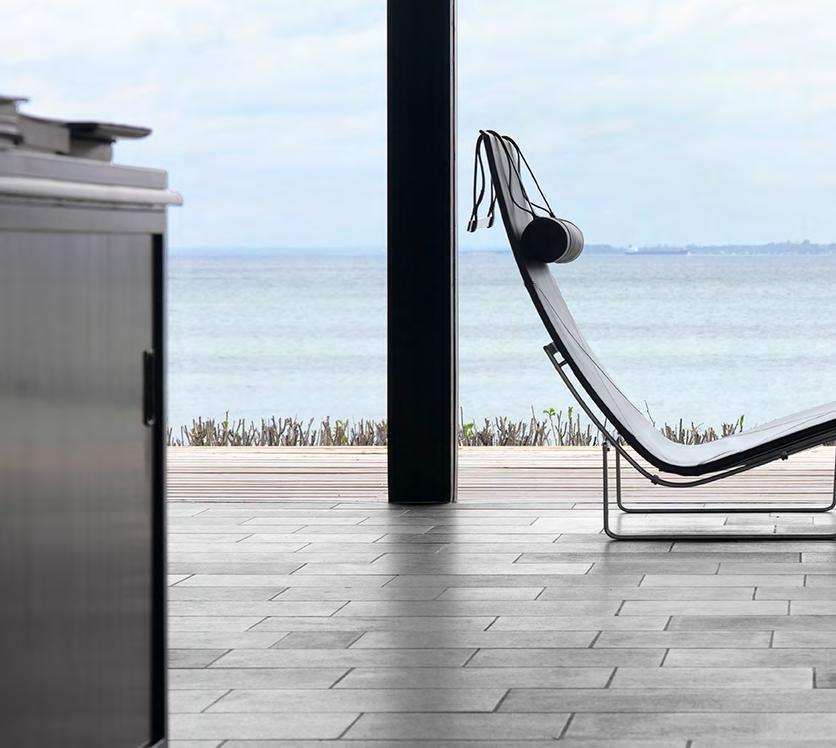
Poul Kjærholm’s furniture was a record of his life and the fundamental concepts that shaped his work are a tribute to both his talent and his character. Looking to the natural world as a source of endless
inspiration and the ultimate standard of beauty, Kjærholm saw the simple, efficient forms of nature as models for his furniture.
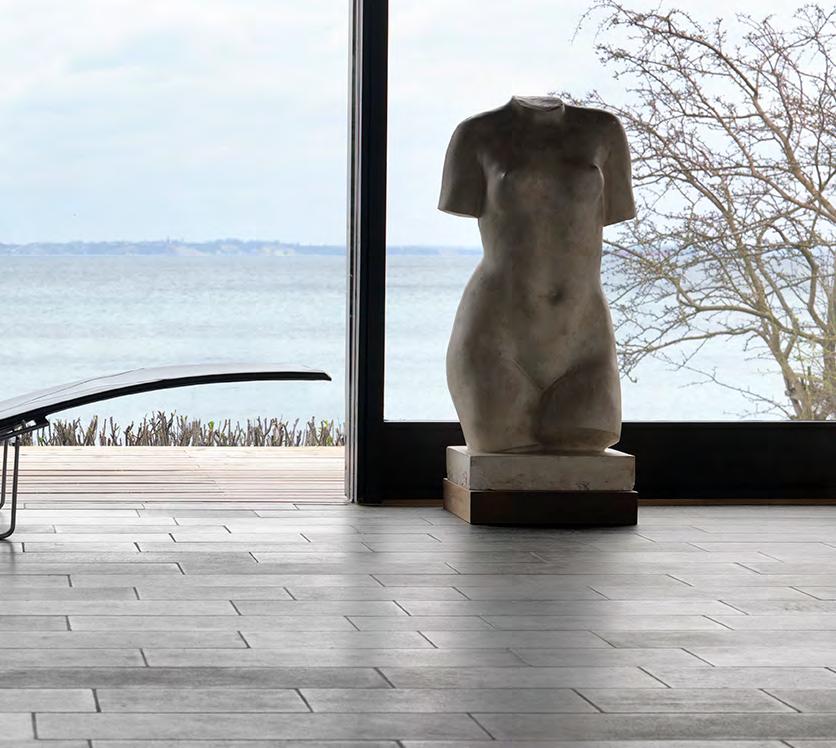
His goal was to create furniture that would appear as timeless and as natural as the leaves on a tree or the glaciers of Greenland. And he succeeded. Kjærholm’s furniture exhibits the same innate simplicity as a leaf
or a flower, while its forms reflect the function of the object, the strength of the steel and the contours of the human body.
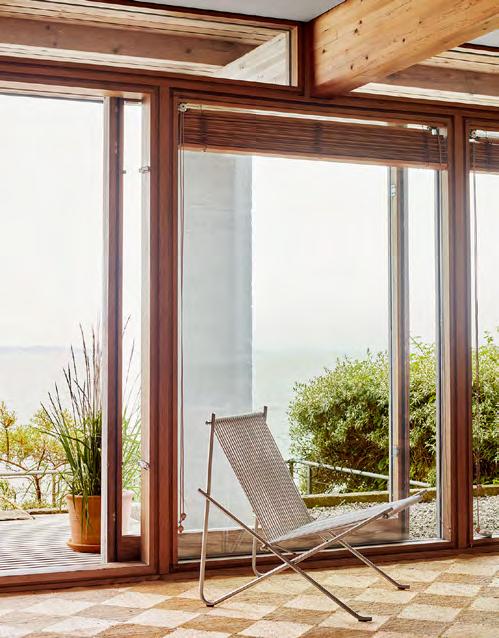


A masterpiece of mid-century modernism, Villa Kjærholm remains a symbol of architectural excellence six decades after it was constructed as a home for Poul Kjærholm and his family.
Nestled between Copenhagen and Helsingør, the 145-square-metre residence was built on a former tennis court and completed in 1962. Today a listed building, it stands as a testament to the love story and shared artistic vision of Poul Kjærholm and his architect wife, Hanne.
Architecture was an inherent part of life for the couple. When drawing the house, Hanne drew inspiration from traditional Japanese housing while also respecting the context of the surroundings and the era’s architectural trends. Mindful of history and using notably few materials, she carefully incorporated existing columns and beams into the new design.
Characterised by its clean lines, minimalist sensibility and seamless integration with its natural surroundings, the house’s unassuming
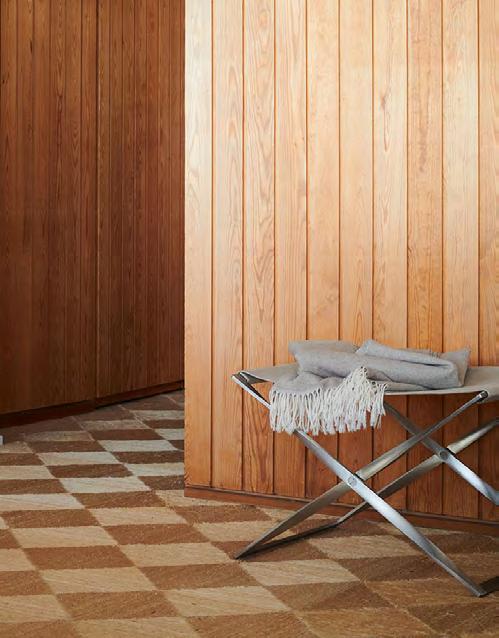
entrance reveals a quiet elegance that belies its profound significance in the world of architecture and design. Once inside, a narrow hallway gives way to an expansive, open living space that spans the length of the house to effortlessly blur the boundaries between indoors and outdoors. The large floor to ceiling windows offer sweeping views of The Sound and the Swedish coastline. And the changing light throughout the day infuses the interior with a dynamic atmosphere.
While the structure was designed by Hanne Kjærholm, Poul Kjærholm conceived the furniture specifically for this space, including the PK54™ table, PK61™ coffee table, PK31™ sofa, PK33™ stool and the PK11™ chair. Remarkably, his entire body of work from 1957 to 1962 was envisioned within these walls.
Today Villa Kjærholm is home to the couple’s son and its enduring legacy, virtually untouched by time, continues to inspire and captivate, reminding us of the transformative power of design in shaping our environment.

With its understated luxury, Villa Kjærholm profiles a subtle yet profound appreciation for architecture as an integral feature of life. White brick walls, wooden beams and Tahitian straw flooring recur throughout, lending a poetic yet functional aesthetic to the space.
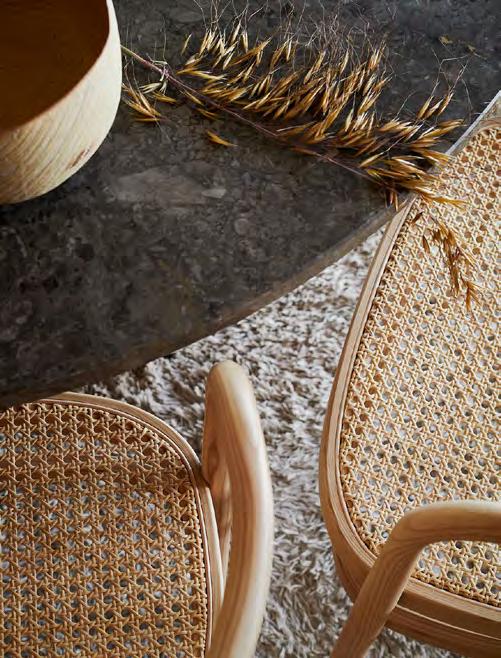
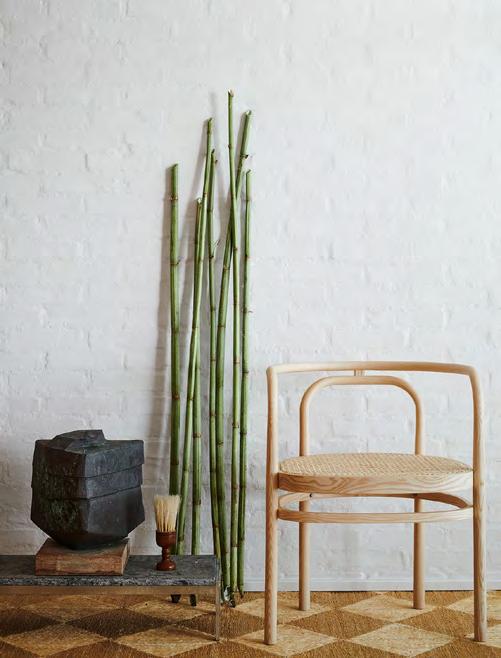

Kjærholm believed that the natural world provides the ultimate standard of beauty. He saw the simple, considered forms found in nature as models for his furniture and he collected photos of landscapes, plants and birds that he used for inspiration.

Kjærholm’s archive image of the landscape of Vendsyssel, Northern Jutland, his birthplace and primary source of inspiration.

Kjærholm’s furniture is distinguished by an absolute devotion to the materials used. He allowed each element and material to display its inherent properties. Steel members were made as thin as possible to display the strength of the material.
He believed that the colour and grain of natural materials were more beautiful than any decoration or colour he could apply; leather, wood and stone were left untreated or finished as plainly as possible to exhibit their natural qualities. In this way, Kjærholm’s furniture transplants the structures of the natural
world into the interior, reminding us that we are all a part of a larger environment.
Paying special attention to the textures of his chosen materials, Kjærholm favoured matte surfaces over the mechanical nature of reflective materials.
The matte, chrome-plated surface of steel gave a degree of visual warmth and softness that matched the other materials. Above all, Kjærholm treated steel, previously considered a rough industrial material, with the same reverence as wood or leather.
By 1955, Kjærholm was experimenting with simple steel angles, using them to create desks and tables. He had finally found his preferred material, treating metal like no one before or since. He prized steel for its versatility; it could be twisted, bent or used flat. Even more importantly, the immense strength of steel allowed him to move beyond the conventions of wood furniture and develop new types of structures.
His first chair, the PK25™, used just a single piece of steel. Together with Ejvind Kold Christensen he
produced new types of steel furniture and their first collection introduced in 1956 included the PK22™ lounge chair and the PK61™ table.
Working with master craftsmen who specialised in different materials, Kjærholm had access to the best steelwork, the finest upholstery and leatherwork and the most beautiful pieces of wood and stone. Working with these craftsmen inspired Kjærholm to new heights of creativity and he produced a string of masterpieces that are still in production today.





“It was easy to work with a frame made of simple, ready-made steel strips and I quickly became fascinated by the many potentials of this new material.”
POUL KJÆRHOLM


In 1957, Kjærholm was awarded the Grand Prix at the Milan Triennale for his PK22™ chair, projecting the designer onto the international stage and guaranteeing the success of his new enterprise. Poul Kjærholm’s uncompromising approach to his craft made his furniture expensive to produce,
limiting the market and quelling his ambition of mass production. Yet he consoled himself with the knowledge that those who purchased his furniture shared his philosophy of timeless, durable and functional furniture and understood his absolute dedication to quality.
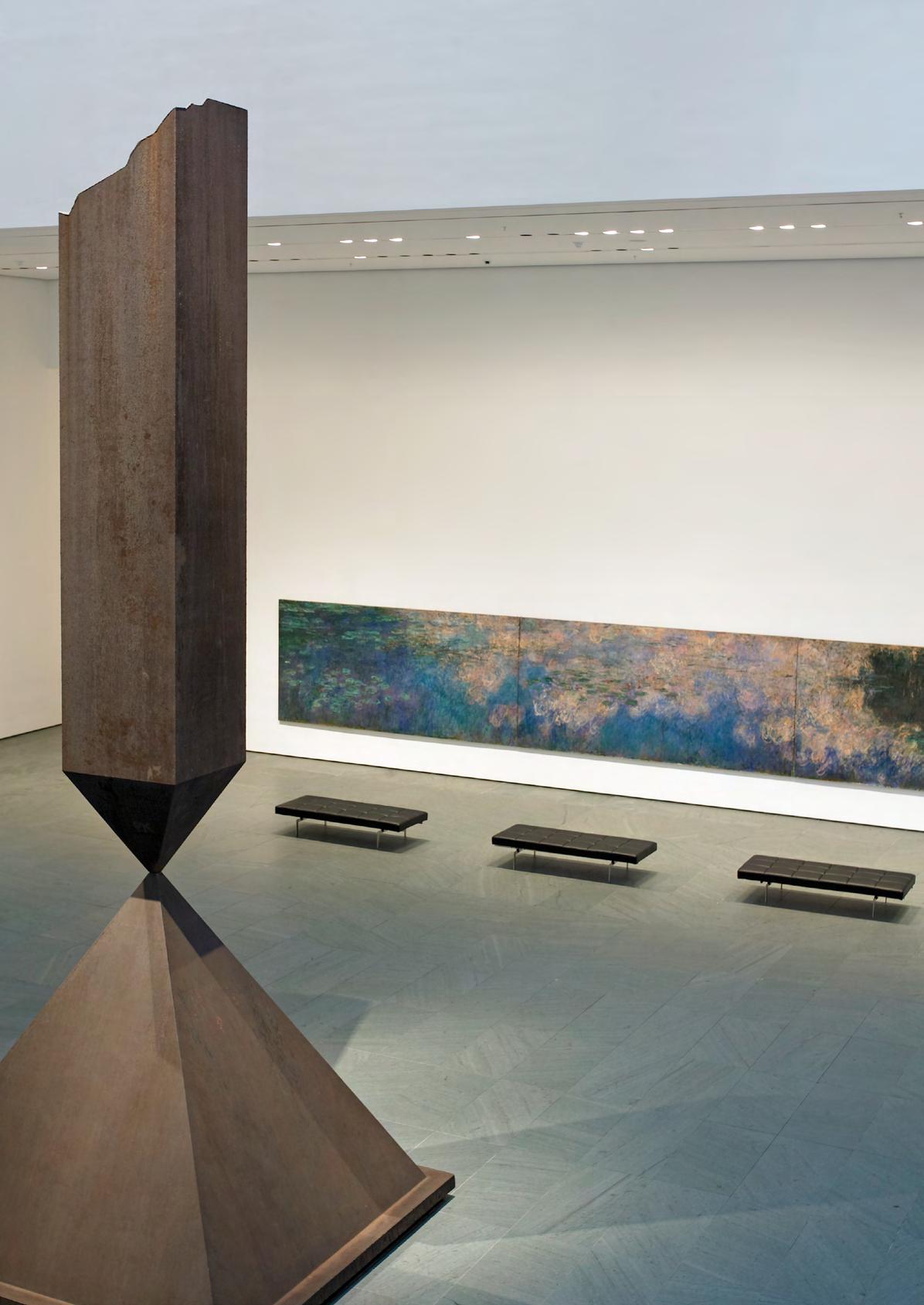
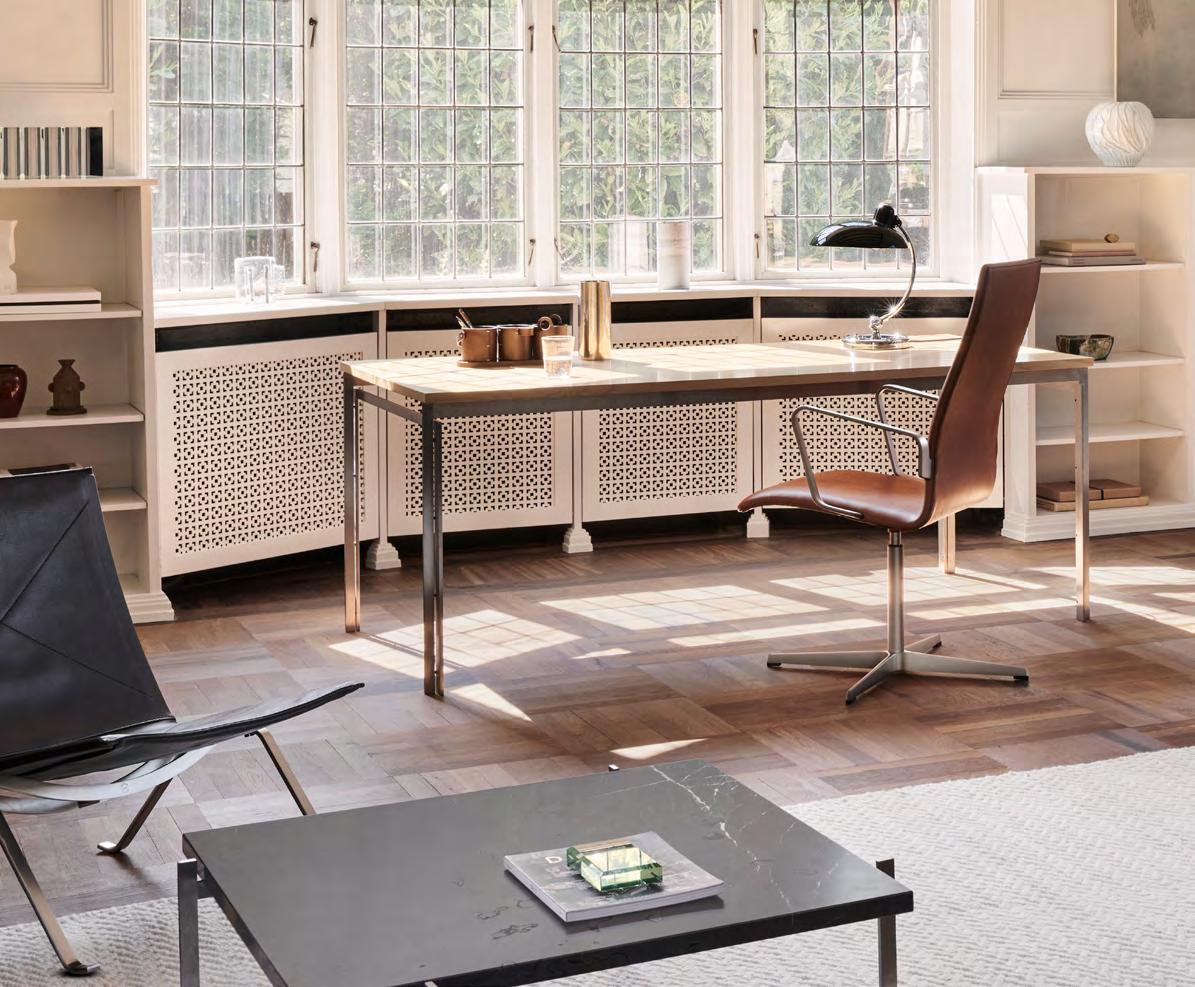
A legend lives on
Two years after Kjærholm’s death in 1980, Ejvind Kold Christensen handed over the production rights to Fritz Hansen – the company that had first recognised Kjærholm’s talent 30 years earlier. The production team assembled by Christensen continued with Fritz Hansen, ensuring that the standards were
maintained and the techniques passed on to a new generation of craftsmen.
Kjærholm understood furniture as a series of types –basic forms defined by their function and relationship to the body: the stool, the chair, the table, the bed.
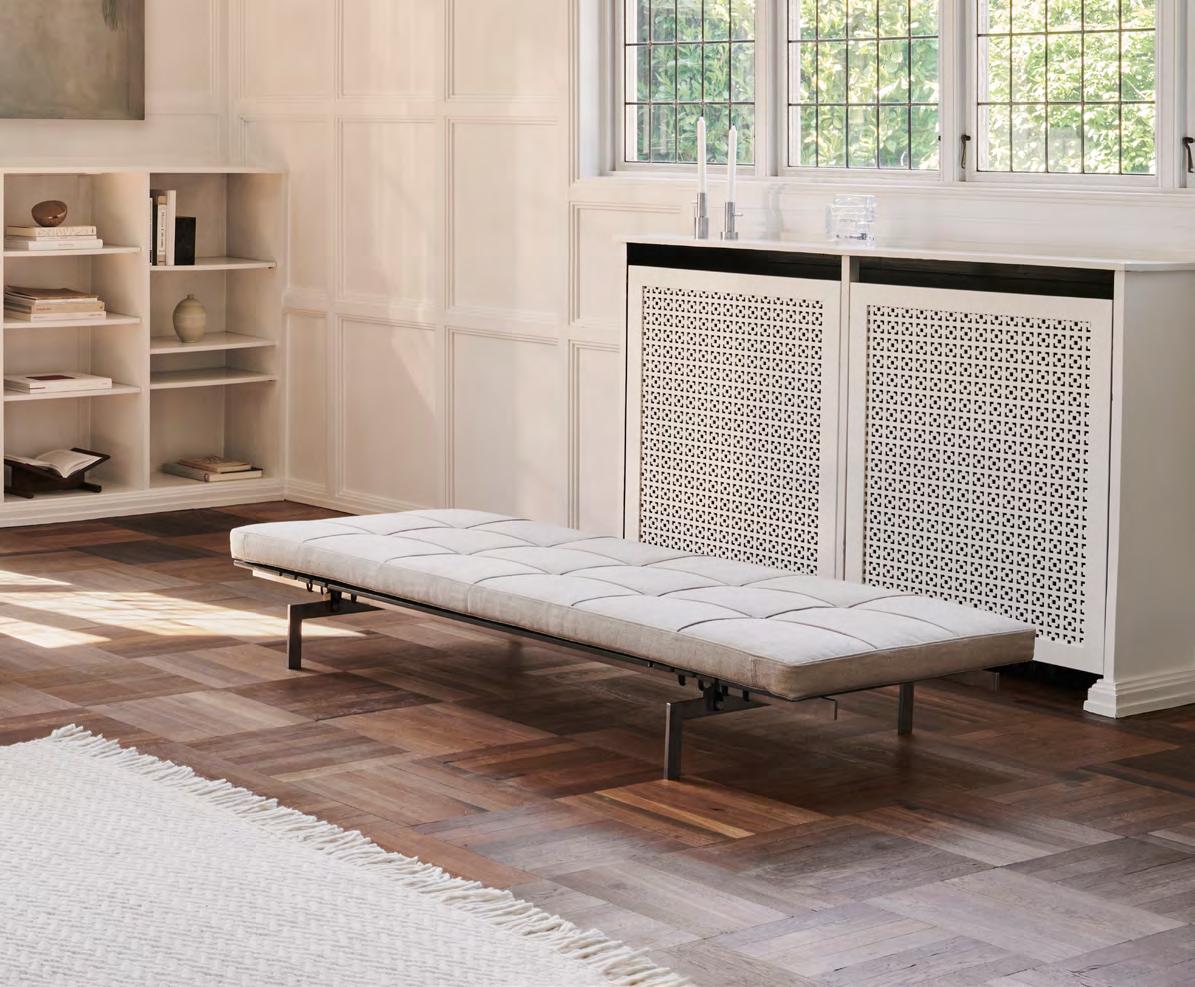
These types can be found across a wide range of cultures and have evolved over thousands of years through the refinement of existing models.
He translated these essential models into his own vocabulary of materials: steel, leather, cane and
stone. As he worked out the designs, he stripped away any element that was not an essential part of the construction. By reducing the furniture to an expression of the function and the materials, he arrived at timeless solutions that exist outside of any era or style.

Steel, leather, wood, marble, canvas and halyard. Poul Kjærholm often pushed materials to their limits to show the beauty and the strength in their natural appeal. As they age, they transform. Etched on the surface are the stories of time; imperfections that
bear witness to a life lived. Each scratch and spot becomes a symbol of authenticity and character – not a flaw to be hidden but an expression of the richness of life and the world around us.
Poul Kjærholm labelled his furniture according to type. He developed a numbering system that reflected his desire to produce furniture that was as simple as a set of numerals or the letters of the alphabet.
He did not assign the numbers in chronological order and he left gaps between the models to allow for later designs. Thus, his lounge chair PK22™ (1956) was followed by the chaise longue PK24™ (1965) and the cantilevered lounge chair PK20™ (1968).
The single exception to the numbering system is the three-legged stool, PK33™. In this instance, Kjærholm saw an exact fit between structure and
number and so he broke his own rule, demonstrating his belief that poetry is as important as science.
Over the years the system has been compromised and can only be considered as a guideline.
00 - 09 Chairs
10 - 19 Chairs with armrests
20 - 29 Lounge chairs & Sofas
30 - 39 Lounge chairs with armrests
40 - 59 High tables & Desks
60 - 79 Low tables
80 - 89 Daybeds & Sofas
90 - 99 Folding stools & Chairs
100 - 119 Accessories

Working with basic furniture types, Poul Kjærholm used pure, abstract shapes that focused attention on the materials. Straight lines and subtle curves reflect his search for ideal forms.
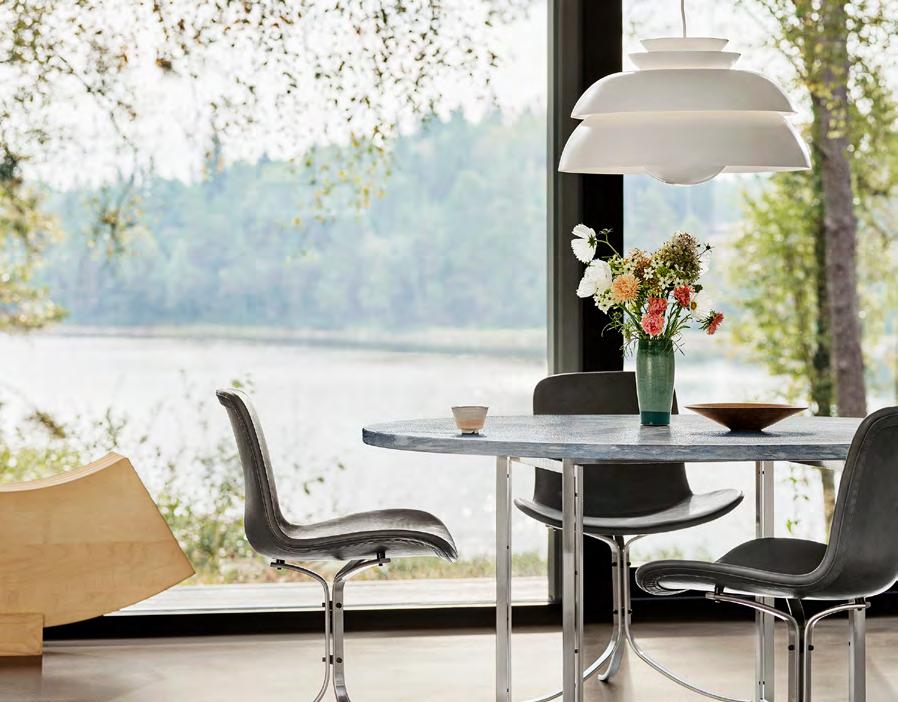
The unique shape of the PK9 chair was inspired by an imprint that Poul Kjærholm’s wife, Hanne, left in the sand after sitting by the sea. Searching for the optimal seat, Kjærholm had his wife sit in boxes of clay, leaving behind impressions that he shaped into plaster models. The dining chair is based on Hanne’s contours. Characterised by three pieces of satin-brushed stainless spring steel which act as a column, supporting the leather seat, the straight lines and subtle curves reflect his search for ideal forms. To make the seat, leather is shaped to a concave mould by wetting the material in water to become heavy and flexible. Sandbags are placed on the chair to ensure the leather fits and dries perfectly. Patience and precision are essential, as the process is gradual and the leather drying time long.



Characterised by its three-legged satin brushed stainless steel frame, the PK11 chair strikes the perfect balance of curves and bold angles. Designed by Poul Kjærholm in 1957, it is a complex yet elegant chair, originally created as a companion to the PK51™ worktable.



The last chair created by Poul Kjærholm, the PK15 from 1979 is a sculptural expression in wood. The PK15 echoes the PK12 chair, considered one of the most articulated of his furniture pieces.
A masterpiece of craftsmanship, it is a paradigm of the clarity and rigour of Kjærholm’s furniture pieces and his constant experimentation with materials and techniques. A departure from his primary material, steel, the chair combines steam bent solid ash and natural French cane in a highly complex piece of woodworking that results in a radically simple expression of two traditional materials.
A testimony to a lifetime of refining work, the PK15 showcases an exceptionally high degree of complexity in the woodwork craftsmanship concealed in simplicity.
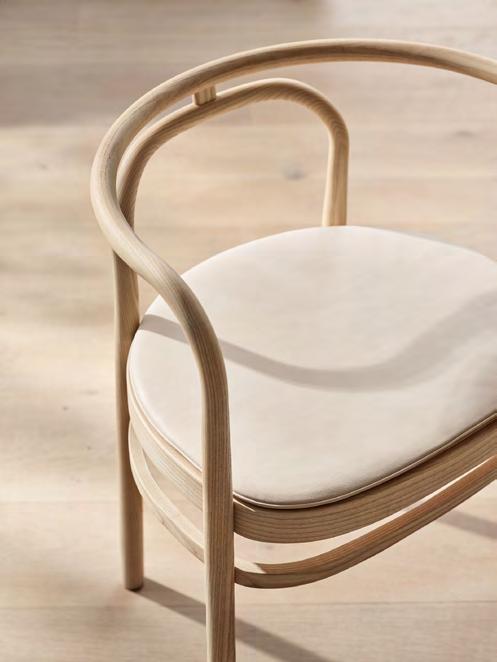
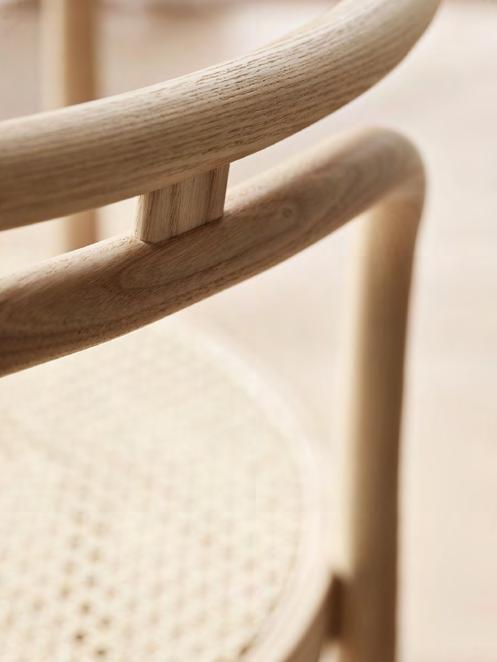

Pushing the boundaries of convention and craftsmanship, Poul Kjærholm’s sophisticated lounge designs offer the ultimate in aesthetics, meticulously detailed and exquisitely crafted to add refined elegance to any interior.

Poul Kjærholm’s one-of-a-kind chair was designed in 1952, at the very beginning of the Danish designer’s tenure at Fritz Hansen. First produced in a limited edition in 1997, the original PK0™ design has since been improved and now bears the name PK0 A. Pushing plywood to its absolute limits, moulding the material into Kjærholm’s purist idiom, nothing on the PK0 A is superfluous. Sculpted in Oregon pine or black coloured ash with cinnabar red spacers as a contrast to the wood, it is a lasting tribute to Kjærholm’s keen eye for aesthetics and materials and a seminal piece of design history.




The striking, streamlined silhouette of the PK4 from 1952 is an early example of Kjærholm’s continuous research of geometry and his unique ability to distil technically complex ideas into visually arresting, functional objects that are as much standalone works of architecture as they are furnishings that stand at the intersection of art and design. Seven tubular steel pieces are welded into a single frame, while the back and seat are a single length of halyard. The result is a light and sculptural expression that is both ingenious and elegant.



Understated and elegant, the PK22 lounge chair epitomises the work of Poul Kjærholm and his search for the ideal form and industrial dimension. The profile of the chair’s steel frame originates from Kjærholm’s graduation project, the ‘Element’ chair, today known as PK25™.
Divided into separate pieces to improve upon the design of the PK25 and for a more economical production, the PK22 steel structure features joints that are as precise and refined as those found in traditional woodwork.
By combining industrial techniques and craft standards, Kjærholm’s chair connects modern life to ageless traditions. In 1957, the PK22 was awarded the Grand Prix at the Milan Triennale, projecting Kjærholm’s name into global design consciousness. Today, the PK22 is available in canvas, leather and handwoven wicker.



The PK22 ™ chair an enduring symbol of the functional beauty and simplicity that Poul Kjærholm championed throughout his career.

Perhaps the most recognisable chair in Fritz Hansen’s Poul Kjærholm’s collection, the PK24 was inspired by the Rococo period and the French chaise longue. Kjærholm used steel to support a curvy, flowing form in leather or wicker. He dubbed it the ’Hammock Chair’ to stress that it functions by suspending the body between two points.
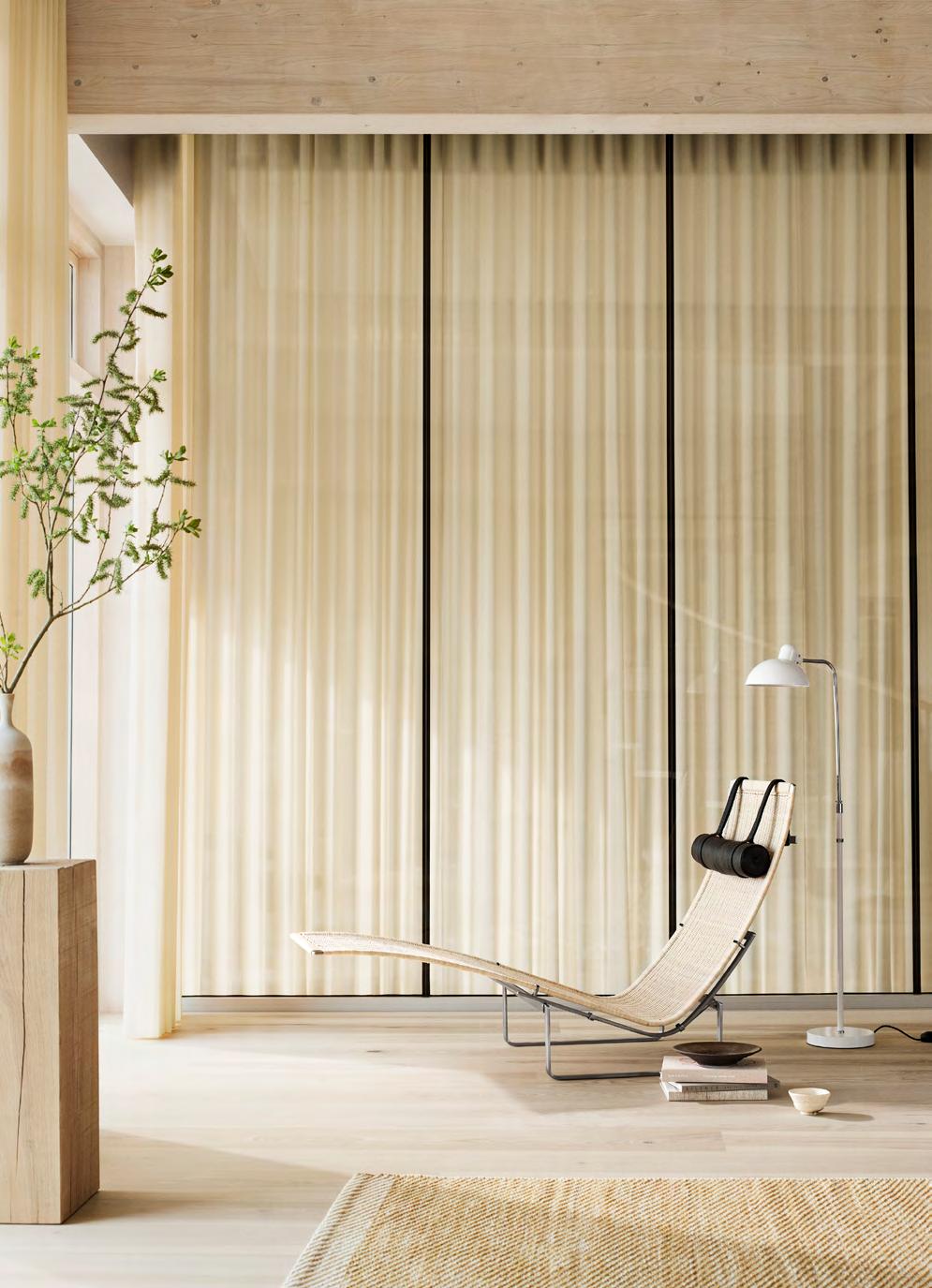


The PK25 chair was designed by Poul Kjærholm for his final graduation project at the School of Arts and Crafts in 1951. Also known as the ‘Element’ chair, the PK25 is a striking example of Kjærholm’s eagerness to transform common, industrial materials into striking works of art.
Created with the attention to detail and precision that he had learned as a cabinetmaker, Kjærholm was determined to reduce the chair to a single piece of each material, resulting in its overarching hallmark: the continual steel frame that bends through the form without interruption and 80 metres of handwoven flag halyard.
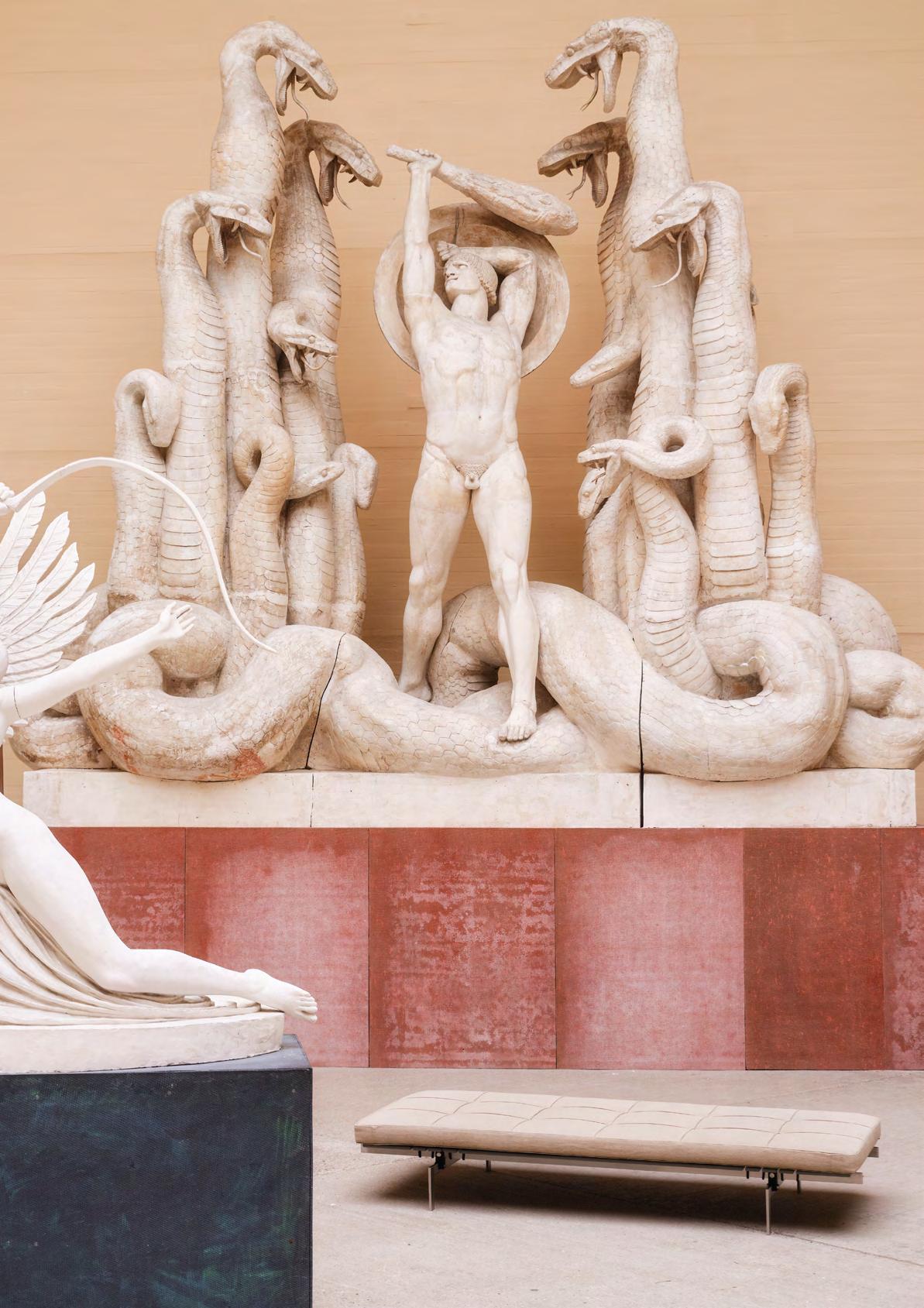
Visionary, rebellious, technically astute and relentlessly curious, Poul Kjærholm would come to represent a minimalist expression that felt like a new wave of Danish modernism, rooted in tradition yet entirely his own.
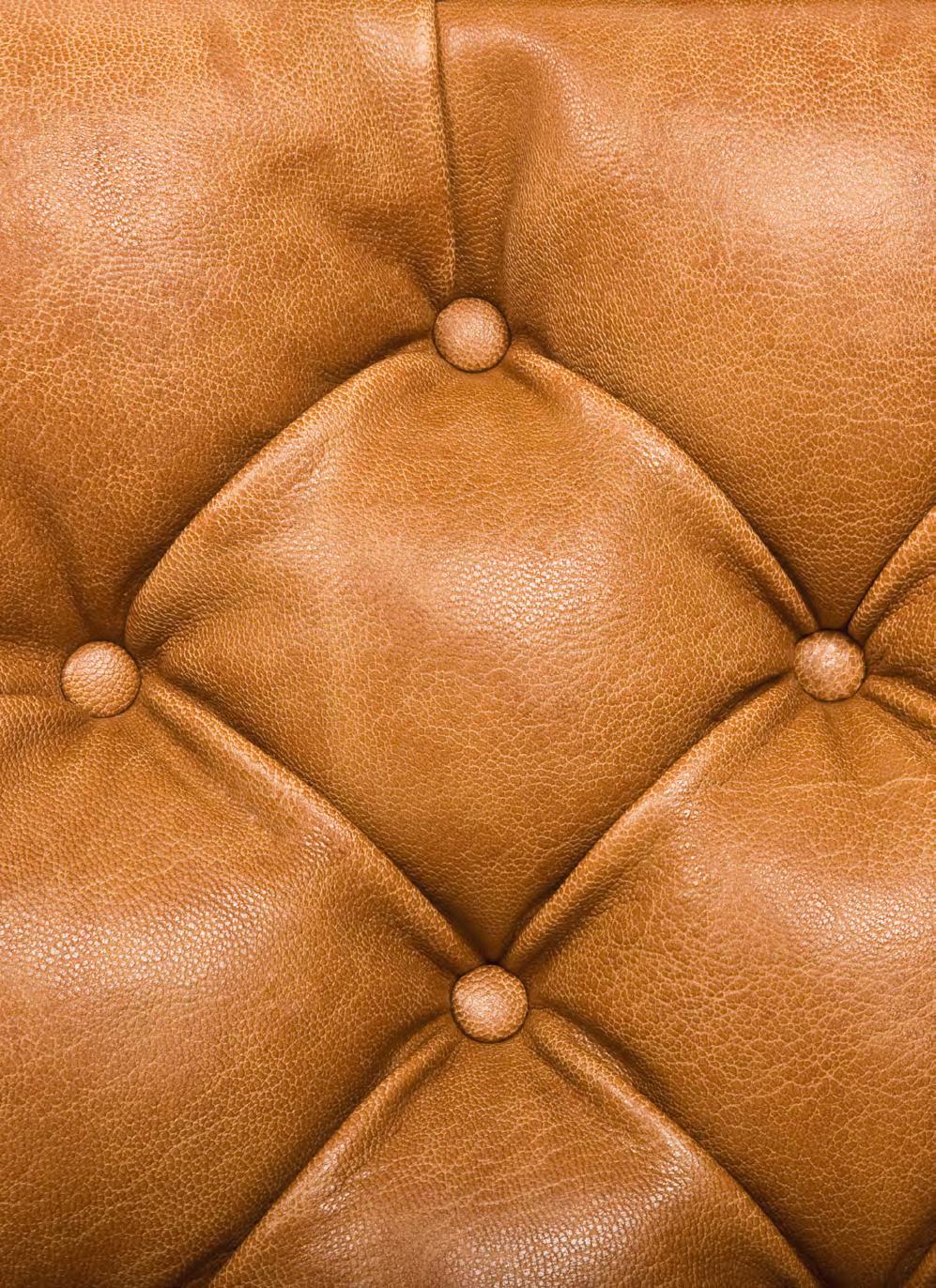

The PK26™ is Poul Kjærholm’s striking wall-mounted sofa in flat steel with a leather-covered back and seat, originally designed in 1956 and still produced by Fritz Hansen today. The sofa appears to float mid-air and is an extraordinary design that is beautiful from every angle. From time to time, Kjærholm managed to obtain and use Niger leather – a goat skin from West Africa coveted for its strength. Notoriously difficult to work with, Niger leather hides are atypically small but worth the trouble. The result is manifest beauty.

An eminent example of Poul Kjærholm’s ability to shape exquisite materials into minimalist and functional objects of everyday beauty, PK31 is a series comprising an armchair and a two- and three-seater sofa, each set on a matte-chromed spring steel frame.
Fusing elegance, luxury and comfort, the PK31 radiates industrial strength and durability while providing perfectly proportioned comfort through its beautifully upholstered seat and backrest in leather and canvas. It is a true representation of Kjærholm’s unwavering belief in the very highest standards of craftsmanship, down to the very last stitch.


The PK80 daybed is the embodiment of Poul Kjærholm’s talent for refining historical models and distilling design down to its very essence. Designed in 1957, it perfectly balances construction and choice of materials: its simplified satin-brushed stainless steel frame holds an upholstered bedplate.
At once exclusive and iconic, the daybed draws inspiration from a Bauhaus sofa designed by Mies van der Rohe and Lilly Reich in 1930, which in turn took its cues from ancient Roman furniture. It can be found today in the Museum of Modern Art, New York, and around the world as a celebrated illustration of craftsmanship and modern design.

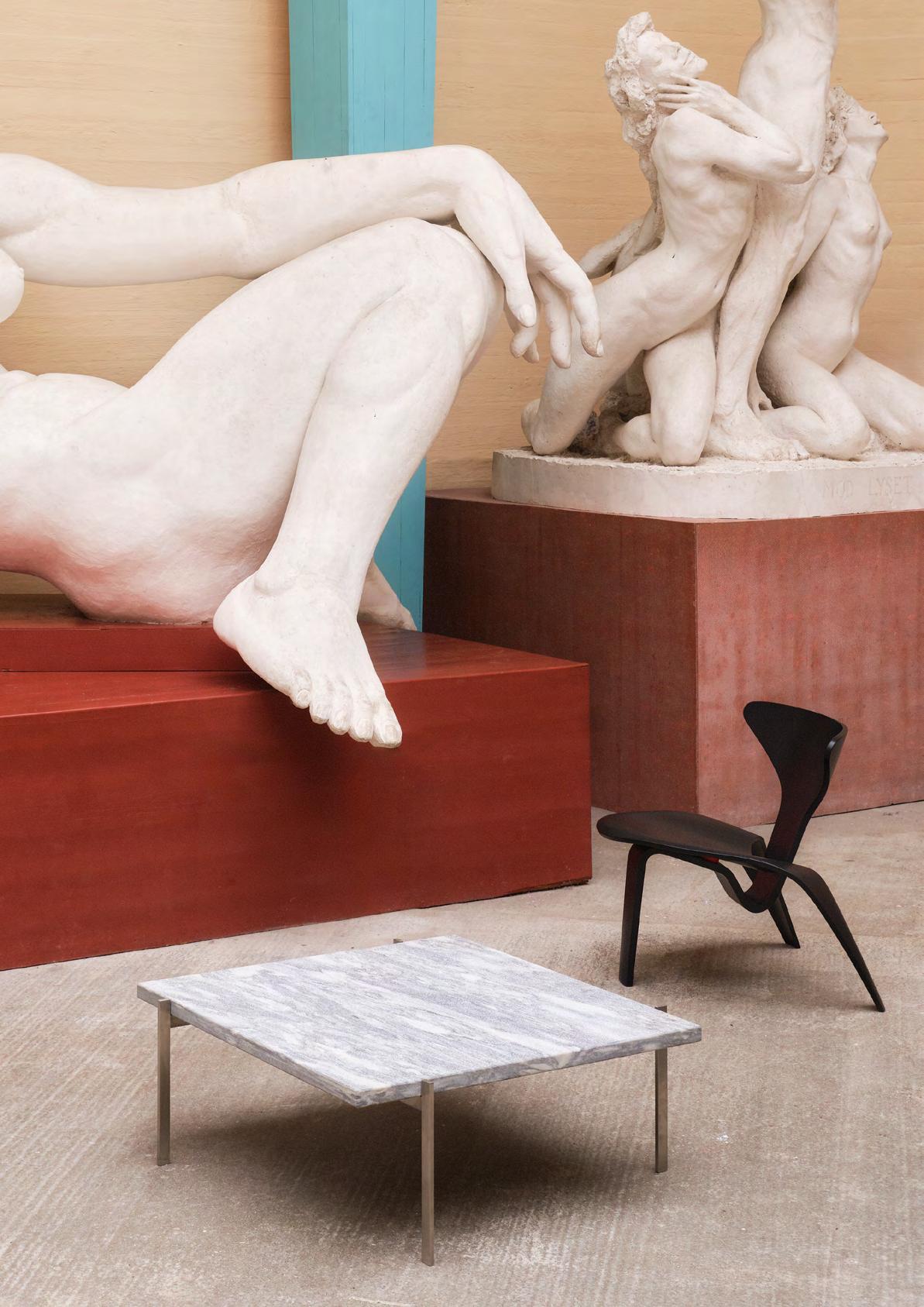
Revolutionising industrial techniques and contrasting the designs of the time, Poul Kjærholm’s sculptural yet functional tables looked to archetypes and modern art for their design cues. As monuments to the acts of working and dining, he believed that groups of furniture should stand free of the walls and allow the room to be experienced as a clearly defined space.
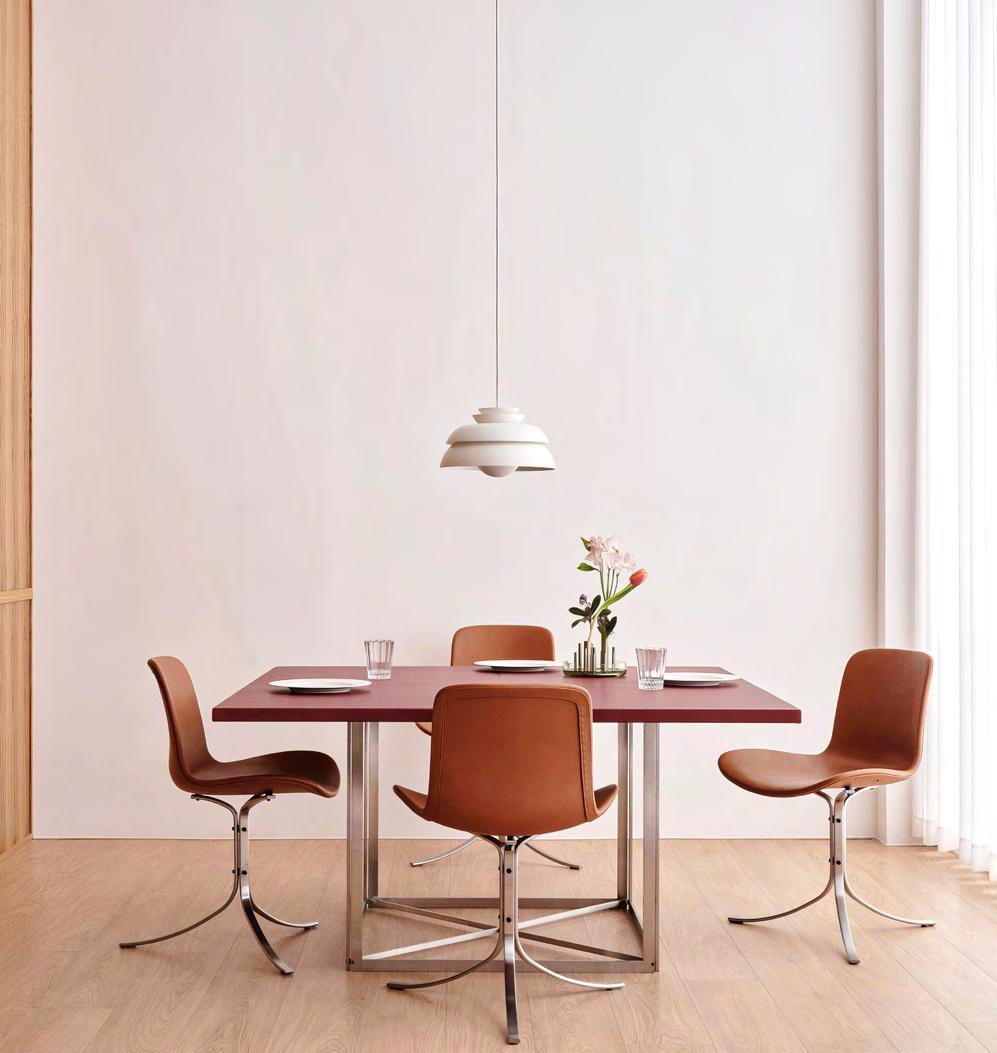
A unique version of Poul Kjærholm’s square conference table, the graphic PK40 features a leather-covered tabletop and stainless steel base. The juxtaposition of materials is truly remarkable, making it a luxurious design with full attention to detail.
“With my father, everything had to be perfect. [He] was not that productive… because the process of creation and development between the workshop and the factory was so exhaustive and uncompromising.”
THOMAS KJÆRHOLM, SON
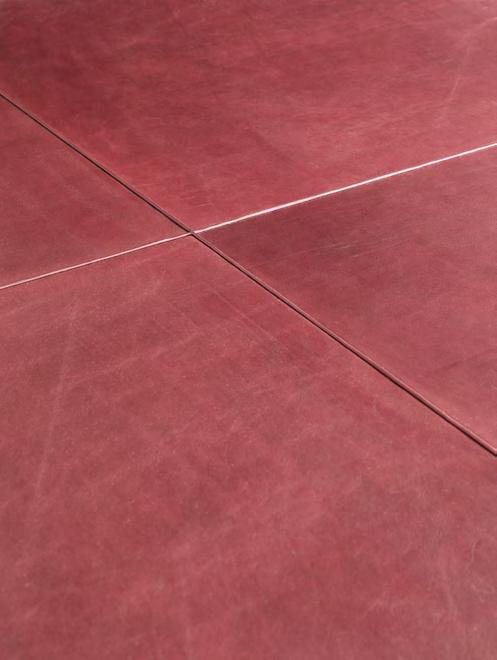
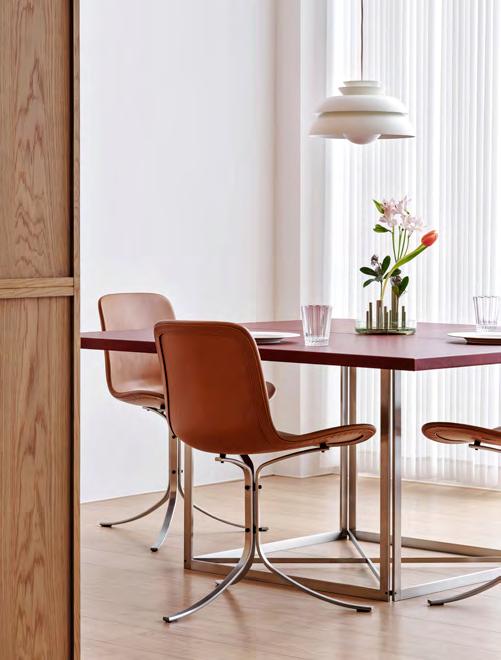
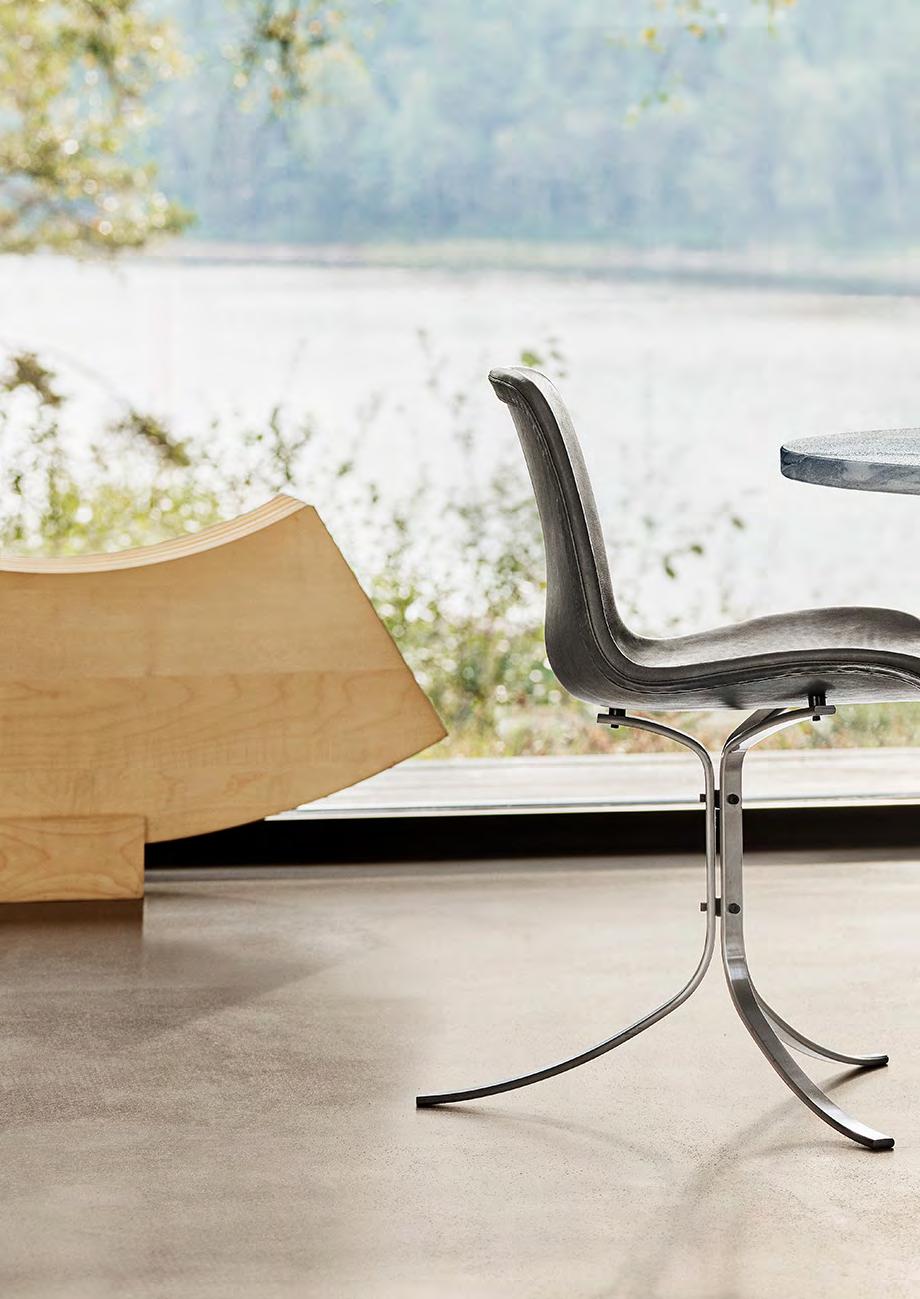



The PK54 dining table from 1963 represents Kjærholm’s exploration of contrasting materials and fundamental forms. Circle meets square; marble meets mineral. With every glance, new details emerge. Featuring marble or granite and a satin-polished steel frame, the table’s subtle and considered irregularity makes it a natural focal point in any room.
Building on the same design principles, the PK54A™ extension ring provides a unique solution for those looking to extend the round dining table. The table is transformed entirely when the soft aesthetic of the wooden ring meets the hard stone. The PK54 is a monument to the act of dining. Natural materials meet in perfect balance and proportion within a design that gently solidifies space.
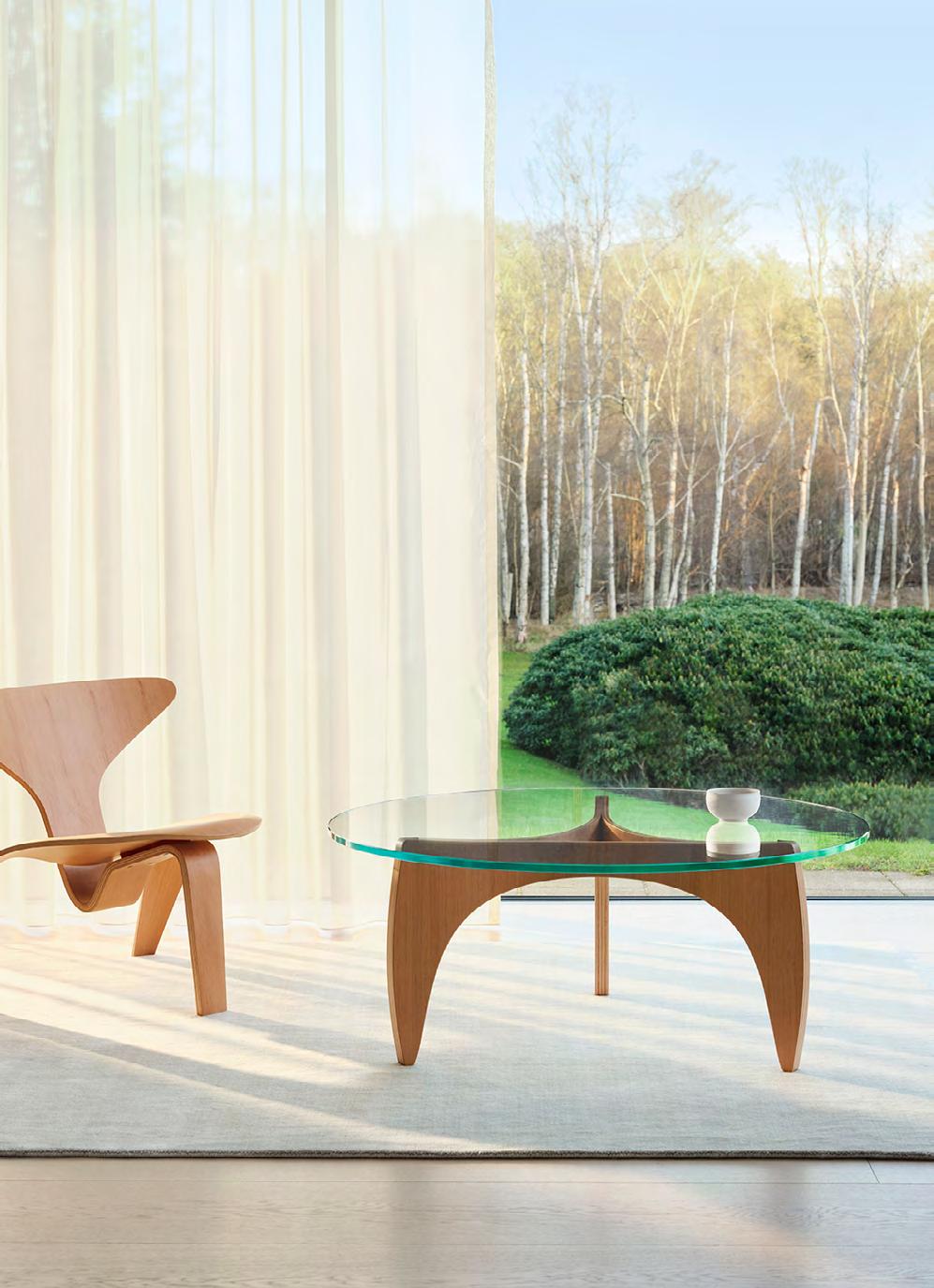

PK60™
A seminal piece of modern design, the PK60 coffee table was conceived by Poul Kjærholm at Fritz Hansen in 1952. The design remained in the archives until 2022, when it was released for the first time as a part of Fritz Hansen’s 150th anniversary collection. Looking to modern art for its cues, it is a lasting tribute to aesthetics and function and a striking piece of modern design history.
The PK60’s sculptural base is shaped from three interlocking pieces of steam-bent wood veneer, in black coloured ash or Oregon pine. The perfectly proportioned design is beautiful from every angle and the clear glass tabletop simultaneously casts shadows and reflects the light.



The PK61 coffee table, designed in 1956, is as elementary as it gets from the hand of Poul Kjærholm. The minimalist, square design shows Kjærholm’s development from industrial designer to noteworthy furniture architect. Distilled into a set of identical elements, the matte, satin-brushed surface of the stainless steel legs lends the metal a degree of visual warmth and softness that equals the tabletop, available in slate, granite, marble or glass. Precision engineered to perfection, machine screws – high-strength fasteners invented for the aircraft industry – lend the table part of its unique look.
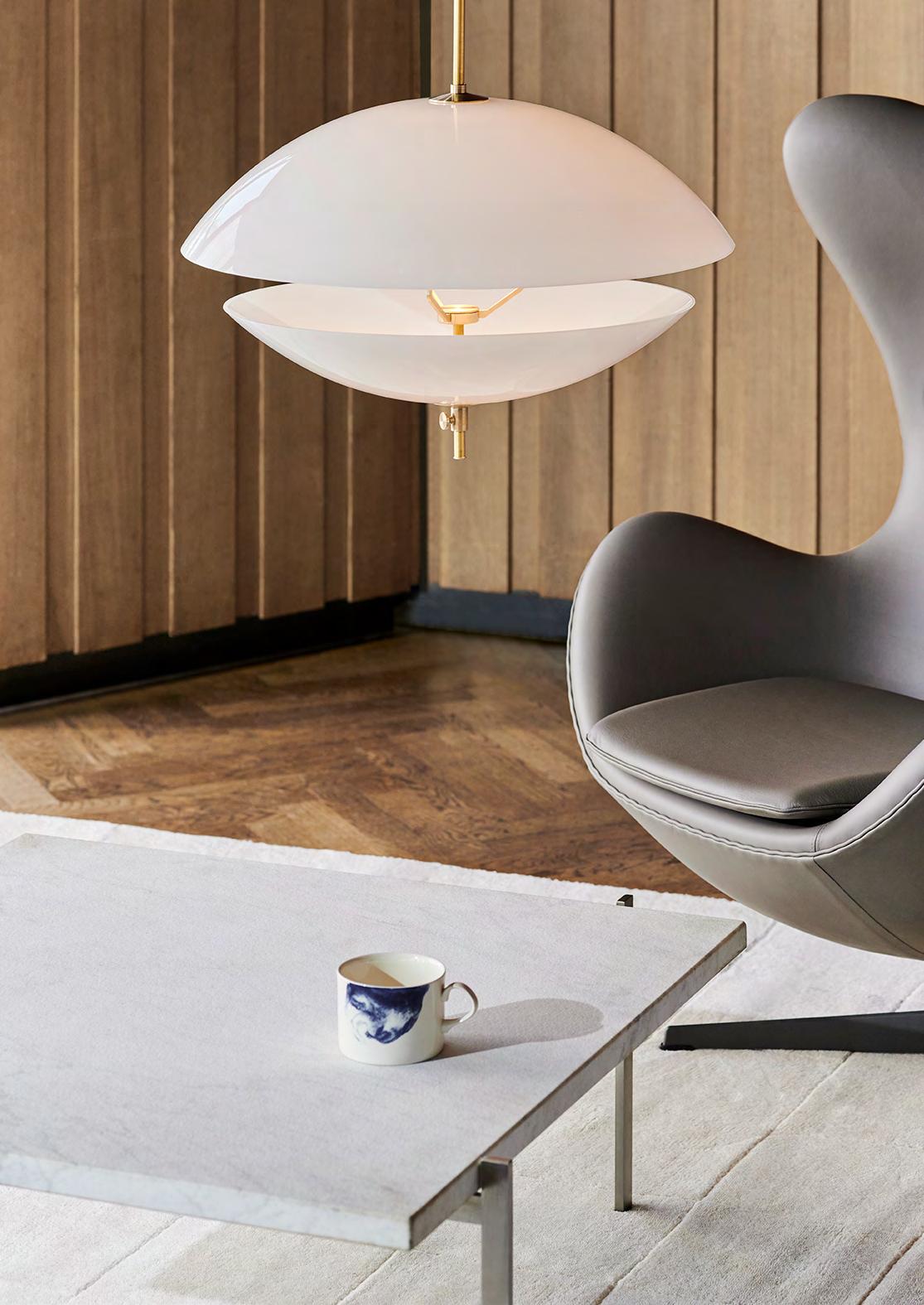


In 1968, Poul Kjærholm set out to design a series of tables that could be combined with his collection of lounge chairs and sofas. The result is the PK62 and PK63 tables in satin-brushed stainless steel and with a slate, marble or granite top.

In pure, geometrical shapes, as elementary as they come, Poul Kjærholm’s stools focus attention on the materials, existing outside of any period or style.

Every Kjærholm piece expresses his rare sense of aesthetics, proportions and shapes.

The PK33 epitomises Poul Kjærholm’s use of assembly techniques, his exploration of materials and his simplification of structure into a type-form. The threelegged matte chromed spring steel stool borrows elements from his other designs while maintaining its own unique expression.



An homage to Poul Kjærholm’s mentor, Kaare Klint, who made a folding chair in wood in 1930, the PK91 remains an unmistakable Kjærholm classic. Meticulous in both design and execution, it profiles Kjærholm’s intense dedication to his work with its streamlined details and timeless form.

The Kjærholm Collection is the body of work created by Poul Kjærholm and reverently produced by Fritz Hansen. Crafted from high-quality materials such as steel, leather, marble and wood, the collection embodies the enduring appeal of functional, minimalist design and the power of thoughtful, well-executed craftsmanship.

LOUNGE CHAIR
Design: Poul Kjærholm, 1952
Shell & Base: Veneer (Black coloured ash or Oregon Pine)
An icon of modern design, the ribbon-like form of the PK0 A pushes wood-bending techniques to their limits while challenging conventional chair forms. Two sculpted forms are connected with a simple spacer in contrasting cinnabar red to create a comfortable chair with no defined frame or base.
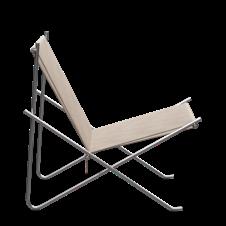
LOUNGE CHAIR
Design: Poul Kjærholm, 1952
Seat: Flag halyard (natural or black)
Base: Stainless steel (brushed or black)
The PK4 is a modern, relaxed lounge chair designed by Poul Kjærholm in 1952. It radiates the designer’s distinctive elegance through a light, minimalistic expression in steel and flag halyard and perfectly exemplifies Kjærholm’s visionary approach where art and design intersect.

LOUNGE CHAIR WITH SEAT CUSHION
Design: Poul Kjærholm, 1952
Seat: Flag halyard (natural or black)
Base: Stainless steel (brushed or black)


Cushion: Natural canvas or leather (Black or Natural)
For many years, the PK8 existed only as a prototype in the home of Hanne Kjærholm, the wife of Poul Kjærholm. Today, it’s widely recognised as a striking execution of Scandinavian craftsmanship. Its unique three-legged form and sinuous curves give it an expression all its own.

CHAIR
Design: Poul Kjærholm, 1978/2007
Plastic (black or white) with front upholstery in leather
Base: Anodised satin-brushed aluminium
The PK9’s unique shape is characterised by three pieces of satin-brushed stainless spring steel that act as a column, carrying the leather seating element. Poul Kjærholm was inspired by a sand imprint of his wife’s behind from a day at the beach. Later, during the design process, Hanne Kjærholm sat in boxes of clay to find the most optimal and comfortable solution.

CHAIR
Design: Poul Kjærholm, 1960
Seat: Leather
Base: Satin-brushed stainless spring steel
Characterised by its three-legged satin-brushed stainless steel frame, PK11 strikes the perfect balance of curves and bold angles. Designed by Poul Kjærholm in 1957, it is a complex yet elegant chair, created as a companion to the PK51™ table.

ARMCHAIR
Design: Poul Kjærholm, 1957
Shell: Armrest in veneer (ash) with a seat upholstered in leather
Base: Satin-brushed stainless steel
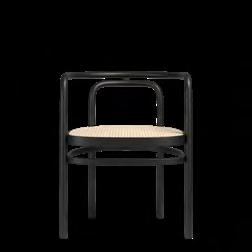
ARMCHAIR
Design: Poul Kjærholm, 1979
Seat: French cane / Natural
Frame: Solid wood (Ash or Black coloured ash)
PK15 designed in 1979 is Poul Kjærholm’s final design. It is an expression of refined beauty and a testament to his lifelong pursuit of perfection and the dedication to details is evident in the simple and calm appearance masking remarkably complex woodwork craftsmanship.
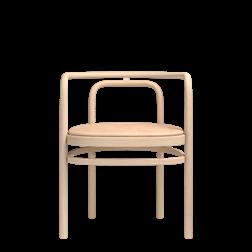
SEAT CUSHION
Design: Poul Kjærholm, 1979
Upholstery: Leather (Black or Natural)
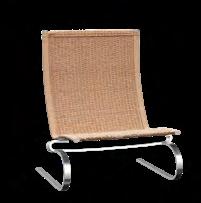
LOUNGE CHAIR
Design: Poul Kjærholm, 1968
Seat: Wicker
Base: Matte chromed spring steel
The PK20 is a laidback and elegant easy chair, designed by Poul Kjærholm. Handcrafted in both wicker and leather, the chair features soft leather upholstery and a reclining headrest, resting on a flexible matte chromed spring steel frame.

LOUNGE CHAIR
Design: Poul Kjærholm, 1968
Seat: Leather (w. headrest)
Base: Matte chromed spring steel

LOUNGE CHAIR
Design: Poul Kjærholm, 1952
Seat: Canvas or leather
Base: Satin-brushed stainless spring steel
The PK22 has a subtle silhouette that has become a genuine design classic. The iconic chair exemplifies Poul Kjærholm’s quest for the ideal form and dimension. It remains a fundamentally modern chair for design enthusiasts today.
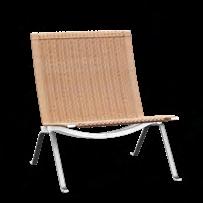
LOUNGE CHAIR
Design: Poul Kjærholm, 1952
Seat: Wicker
Base: Satin-brushed stainless spring steel

CHAISE LONGUE
Design: Poul Kjærholm, 1965
Seat: Leather
Base: Satin-brushed stainless steel

LOUNGE CHAIR
Design: Poul Kjærholm, 1979
Seat: Flag halyard (natural or black)
Base: Matte chromed spring steel
The PK24 lounge chair stands out as perhaps the most recognisable chair in Fritz Hansen’s Poul Kjærholm collection. Inspired by the Rococo period and the French chaise longue, Kjærholm used steel to support a curvy, flowing form. He labelled it the ’Hammock Chair’ to stress that it functions by suspending the body between two points.

CHAISE LONGUE
Design: Poul Kjærholm, 1965
Seat: Wicker
Base: Satin-brushed stainless steel.
The PK25 was designed by Poul Kjærholm for his final graduation project at the School of Arts and Crafts in 1952. Also known as the ‘Element’ chair, the PK25 is a striking example of Kjærholm’s eagerness to transform common, industrial materials into works of art. Kjærholm was determined to reduce the chair to a single piece of each material, resulting in its overarching hallmark: the continual steel frame that bends through the form without interruption.

1-SEATER SOFA
Design: Poul Kjærholm, 1956
Seat: Leather
Base: Matte chromed spring steel
The PK26 is a striking wall-mounted sofa in flat steel with a leather-covered back and seat, designed by Poul Kjærholm. The sofa appears to float mid-air and is an extraordinary design that is beautiful from every angle.
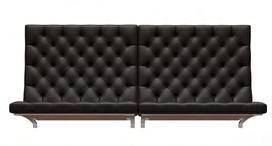
2-SEATER SOFA
Design: Poul Kjærholm, 1956
Seat: Leather
Base: Matte chromed spring steel
The PK31 chair and sofa series is a prime example of Poul Kjærholm’s ability to work with exquisite materials and minimalism. In the search for the ideal form, Kjærholm created the PK31 – a fusion of elegance, luxury and comfort. The PK31 series is available as an armchair and a 2- or 3-seater sofa and features a matte chromed spring steel frame.
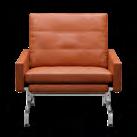
LOUNGE CHAIR
Design: Poul Kjærholm, 1958
Seat: Leather
Base: Matte chromed spring steel

2-SEATER SOFA
Design: Poul Kjærholm, 1958
Seat: Leather
Base: Matte chromed spring steel
3-SEATER SOFA
Design: Poul Kjærholm, 1958
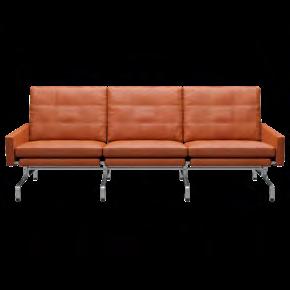
Seat: Leather
Base: Matte chromed spring steel
The iconic PK33 epitomises Poul Kjærholm’s use of assembly techniques, his exploration of materials and his simplification of structure into a type-form. The three-legged matte chromed spring steel stool borrows elements from his other designs, while still maintaining its own unique expression.

STOOL
Design: Poul Kjærholm, 1959
Seat: Canvas or leather
Base: Matte chromed spring steel

TABLE
Design: Poul Kjærholm, 1980
Tabletop: Leather
Base: Satin-brushed stainless steel
PK40 is a unique version of Poul Kjærholm’s square conference table and features a leather-covered tabletop and stainless steel base. The juxtaposition of materials is truly remarkable, making it a luxurious design with full attention to detail.

TABLE
Design: Poul Kjærholm, 1956
Tabletop: Ash veneer
Base: Matte chromed spring steel
The rectangular PK51 table from 1957 is characterised by its ash veneer top and satin-brushed stainless steel frame. The design was originally launched as a matching set with the PK11™ chair.

TABLE
Design: Poul Kjærholm, 1963
Tabletop: Marble or granite
Base: Satin-brushed stainless steel
The PK54 dining table represents an exploration of contrasting materials and forms by Poul Kjærholm. Circle meets square, marble meets mineral – every time you look at it, new details emerge. The PK54A extension ring provides a unique solution for those looking to extend the original PK54 round dining table.

EXPANSION RING
Design: Poul Kjærholm, 1952
Expansion ring: Solid wood (maple)
Storage unit: Solid wood (maple)

TABLE
Design: Poul Kjærholm, 1957
Tabletop: Ash veneer
Base: Satin-brushed stainless steel
The rectangular PK55 table from 1957 is characterised by its ash veneer top and satin-brushed stainless steel frame. The design was launched as a smaller version of the PK51™.
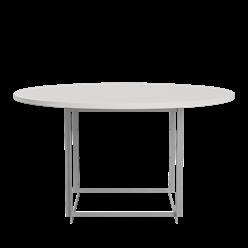
TABLE
Design: Poul Kjærholm, 1963/2007
Tabletop: Polyester composite (white)
Base: Anodised satin-brushed aluminium
PK58 is a minimalist table inspired by the PK54™, although slightly taller and in different materials. The proportions are still carefully considered and beautifully executed, with a blend of circular tabletop and a cube base with sharp angles.
Conceived in 1952 together with the PK0 A™ chair, the PK60 is a significant piece of mid-century Danish design that combines talented craftsmanship with innovation. Its wood veneer base plays with the possibilities of steam bending techniques, shaping three interlocking pieces into one united whole.
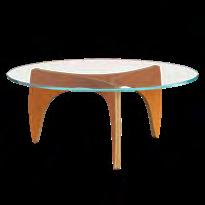
COFFEE TABLE
Design: Poul Kjærholm, 1956
Tabletop: Glass.
Base: Veneer (Black coloured ash or Oregon Pine)

COFFEE TABLE
Design: Poul Kjærholm, 1956
Tabletop: Slate, marble, granite or glass
Base: Satin-brushed stainless steel
The PK61 and PK61A coffee table are as minimalistic as it gets from the hand of Poul Kjærholm. The square design serves as a powerful manifesto and shows Kjærholm’s development from industrial designer to noteworthy furniture architect.
COFFEE TABLE

Design: Poul Kjærholm, 1956
Tabletop: Marble, granite or glass
Base: Satin-brushed stainless steel
In 1968, Poul Kjærholm set out to design a series of tables that could be combined with his collection of lounge chairs and sofas. The resulting PK62 was created in connection with the development of two other chairs: the PK20™ and PK24™. A design favourite, the statement side table features a satin-brushed stainless steel base and a tabletop made of slate, marble or granite.

COFFEE TABLE
Design: Poul Kjærholm, 1968
Tabletop: Slate, marble or granite
Base: Satin-brushed stainless steel
COFFEE TABLE
Design: Poul Kjærholm, 1968
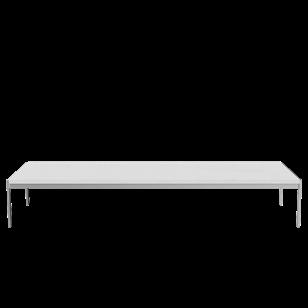
Tabletop: Slate, marble or granite
Base: Satin-brushed stainless steel
In 1968, Poul Kjærholm set out to design a series of tables that could be combined with his collection of lounge chairs and sofas. The resulting PK63 and PK63A were created in connection with the PK31™ 2-seater and 3-seater sofas. The iconic coffee tables feature a satin-brushed stainless steel base and a tabletop made of slate, marble or granite.
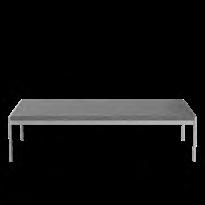
COFFEE TABLE
Design: Poul Kjærholm, 1968
Tabletop: Slate, marble or granite
Base: Satin-brushed stainless steel

COFFEE TABLE
Design: Poul Kjærholm, 1979
Tabletop: Slate, marble, granite or glass
Base: Satin-brushed stainless steel
This unique coffee table refers back to the best traditions of Scandinavian craftsmanship. As with several of his tables, Kjærholm created PK65 to complement one or more of his many chairs and sofas; in this case, the PK20™ lounge chair.
The PK71 comprises of a series of three nesting tables, designed to be stored and stacked under each other. With their toy-like appearance, the small, abstract tables can be shuffled around and used together or separately. Today, the PK71 tables are displayed in a permanent collection at the Museum of Modern Art in New York.

Design: Poul Kjærholm, 1957
Tabletop: Acrylic (black or white)
Base: Satin-brushed stainless steel
DAYBED
Design: Poul Kjærholm, 1957
Shell: Canvas or leather
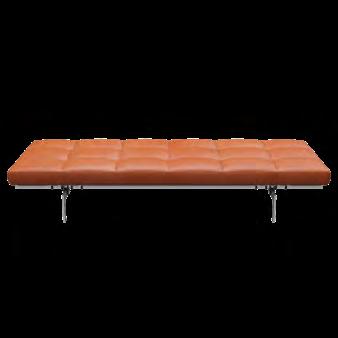
Base: Satin-brushed stainless steel
The PK80 daybed is the embodiment of Poul Kjærholm’s talent for refining historical models and distilling design down to its very essence. The daybed draws inspiration from a sofa designed by Mies van der Rohe and Lilly Reich in 1930. It can be found today in the Museum of Modern Art in New York, as well as around the world as a celebrated illustration of craftsmanship and modern design.
DAYBED
Design: Poul Kjærholm, 1959

Shell: Leather
Base: Satin-brushed stainless steel
PK81 is a square version of Poul Kjærholm’s classic daybed, made to furnish the public area of the new Tårnby town hall by Halldor Gunløgsson and Jørn Nielsen. Today, it graces powerful spaces around the world, including the Museum of Modern Art in New York City.
The PK91 is an homage to the designer’s mentor, Kaare Klint, who made a folding chair in wood in 1930. This folding stool is unmistakably a Kjærholm classic.
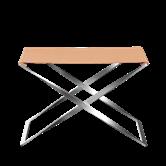
Design: Poul Kjærholm, 1961
Seat: Canvas or leather
Base: Satin-brushed stainless steel
FRITZ HANSEN
Allerødvej 8 3450 Allerød Denmark
Tel: +45 48 17 23 00
GET IN TOUCH
SALES - ASIA & OCEANIA customerserviceasia@fritzhansen.com
Tel: +81 3 3400 3316
SALES - EUROPE salessupport@fritzhansen.com
Tel: +45 70 80 70 90
SALES - NORTH AMERICA info@fritzhansen.com Tel: +1 212 219 3226
PRESS - GLOBAL press@fritzhansen.com
NEWSLETTER
Sign up at: fritzhansen.com/sign-up
DOWNLOADS
Find 2D & 3D files, imagery, product facts and much more at: downloads.fritzhansen.com
FOLLOW US INSTAGRAM @fritzhansen
PINTEREST @fritzhansen
FACEBOOK Fritz Hansen
LINKEDIN Fritz Hansen FRITZHANSEN.COM
